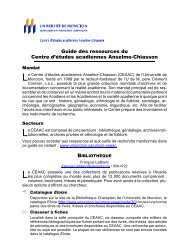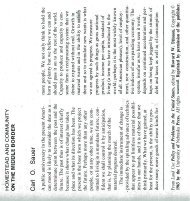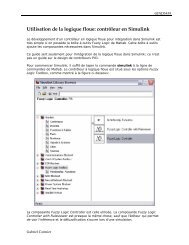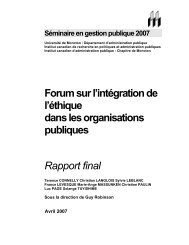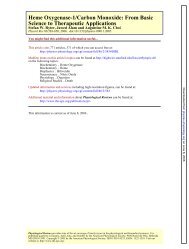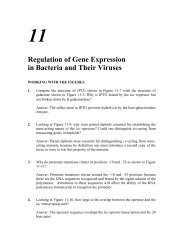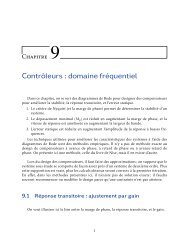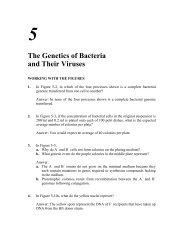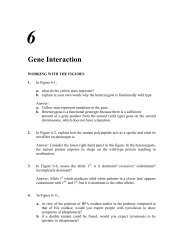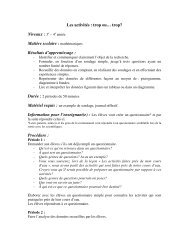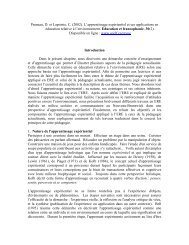IGA 8/e Chapter 2
IGA 8/e Chapter 2
IGA 8/e Chapter 2
You also want an ePaper? Increase the reach of your titles
YUMPU automatically turns print PDFs into web optimized ePapers that Google loves.
<strong>Chapter</strong> Two 27a. How is the disorder inherited? State reasons for your answer.b. Give genotypes for as many individuals in the pedigree as possible. (Inventyour own defined allele symbols.)c. Consider the four unaffected children of parents III-4 and III-5. In all fourchildprogenies from parents of these genotypes, what proportion isexpected to contain all unaffected children?Answer:a. The disorder appears to be dominant because all affected individuals havean affected parent. If the trait was recessive, then I-1, II-2, III-1, and III-8would all have to be carriers (heterozygous for the rare allele).b. Assuming dominance, the genotypes are:I : d/d, D/dII : D/d, d/d, D/d, d/dIII : d/d, D/d, d/d, D/d, d/d, d/d, D/d, d/dIV : D/d, d/d, D/d, d/d, d/d, d/d, d/d, D/d, d/dc. The mating is D/d d/d. The probability of an affected child (D/d) equals1 / 2 , and the probability of an unaffected child (d/d) equals 1 / 2 . Therefore, thechance of having four unaffected children (since each is an independentevent) is: 1 / 2 1 / 2 1 / 2 1 / 2 = 1 / 16 .52. Four human pedigrees are shown in the accompanying illustration. The blacksymbols represent an abnormal phenotype inherited in a simple Mendelianmanner.




